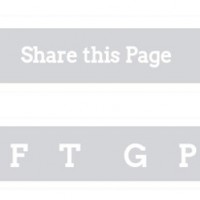In today’s fierce market competition, it is crucial to have a powerful and functional website that delivers the intended results. One way to facilitate this is to avoid common mistakes in its content, functionality, layout and other design factors that tend to negatively impact the site’s conversion rate. Avoiding these mistakes will give your visitors a good experience while interacting with your website. To achieve this, avoid the common website design mistakes that are discussed below:
1. Message ambiguity
Internet users are constantly looking for information and by visiting your website, they hope to achieve their objective. If instead they find an unclear message of what the website is all about, they will immediately close the site and look for the information elsewhere. It is therefore important to clearly outline your message in an orderly and effective manner starting from the homepage so as to keep your visitors engaged.
2. Content issues
A website’s content greatly determines its success. If the site provides fresh, relevant content, it will attract visitors, which will result in greater success. Your content should be able to answer the questions that your targeted traffic may have and provide them with links to access extra information on their subject of interest. However, ensure that you do not over limit or overcrowd your website with content, which may be counter-productive.
3. Complex navigation
Your website’s layout should be simple and clear for users to navigate through its pages. This especially applies for the homepage which is most often the first page that your visitors will interact with. It should provide them with a clear guideline of where to find any information they need. Also, links to references or other web pages should be clickable and visible preferably in a different font.
4. Browser compatibility
There are many available browsers today such as Internet Explorer, Safari, Firefox, Opera, and Chrome. Since not all your visitors will be using the same browser, it is important that your website is compatible across major web browsers to avoid losing out on your targeted traffic. Ensure that your web developer or designer follows W3C code standardization guidelines that will enable your HTML code to be rendered across multiple platforms.
5. Improper use of font color
Color greatly influences the aesthetic value of a website. A good blend of color will attract visitors and create an interest in them to find out more about the website. The types of color you use in your website will determine whether it will promote your site’s usability or not. Avoid too many bright and flashy colors, which will easily tire your visitors’ eyes. Your designers should have a good sense of color use to promote your site’s usability and value.
6. Misplaced advertisements
It is better to restrict the ads on your website to a particular section and not have them jumbled up with your content, since it will create a confusing effect to your visitors. Most users do not appreciate pop ups and ad interruptions when viewing a website.
7. Unavailable search function
By providing a search function in your website, you will enable your users to easily access the information they are looking for. This time-saving feature will enhance your site’s user-friendliness.
Joy Maiywa is a professional freelance writer and blogger. She has worked with clients from different fields including technology, education, health, and business and entrepreneurship. She writes for Degree Jungle, which provides information for college students.







